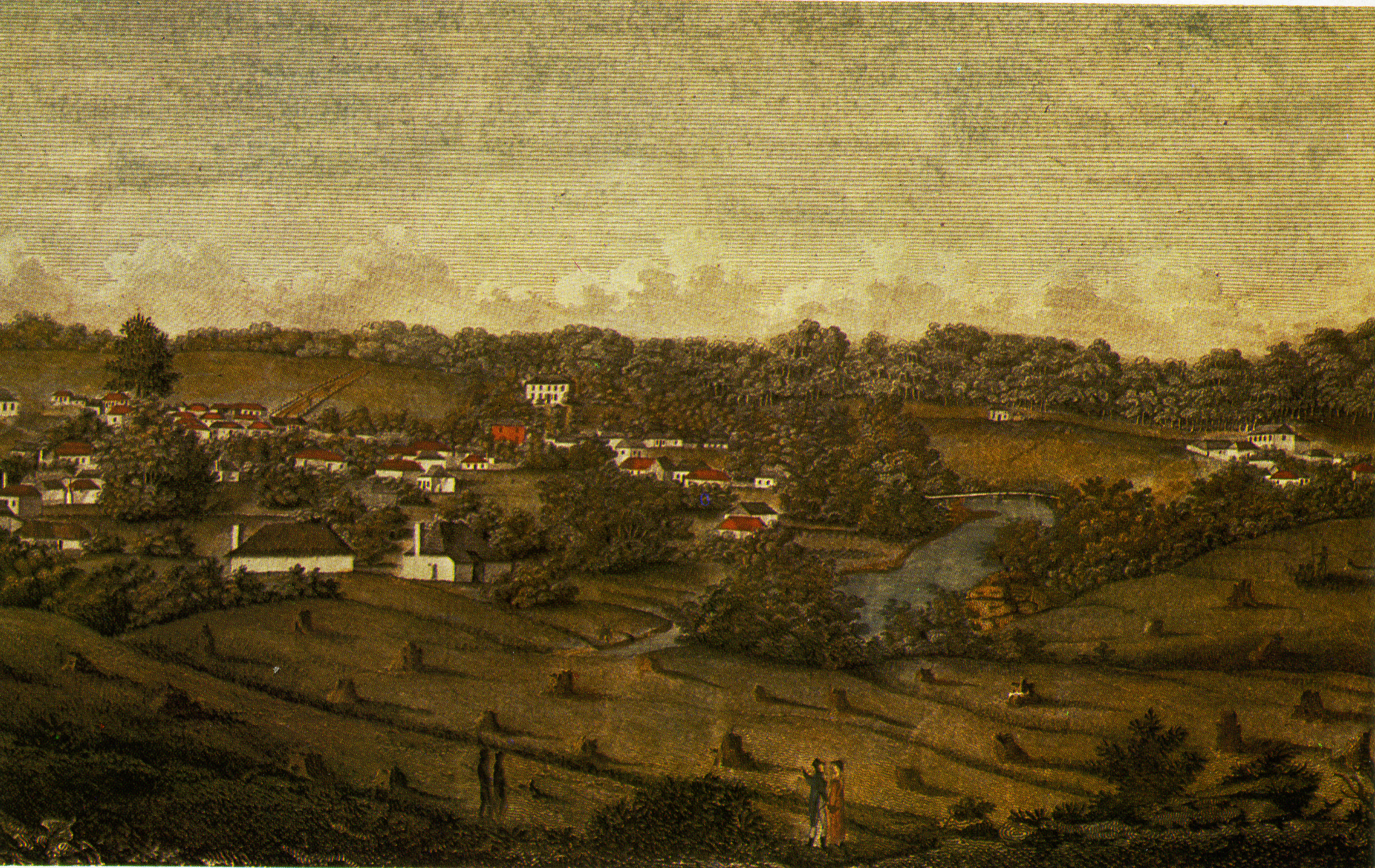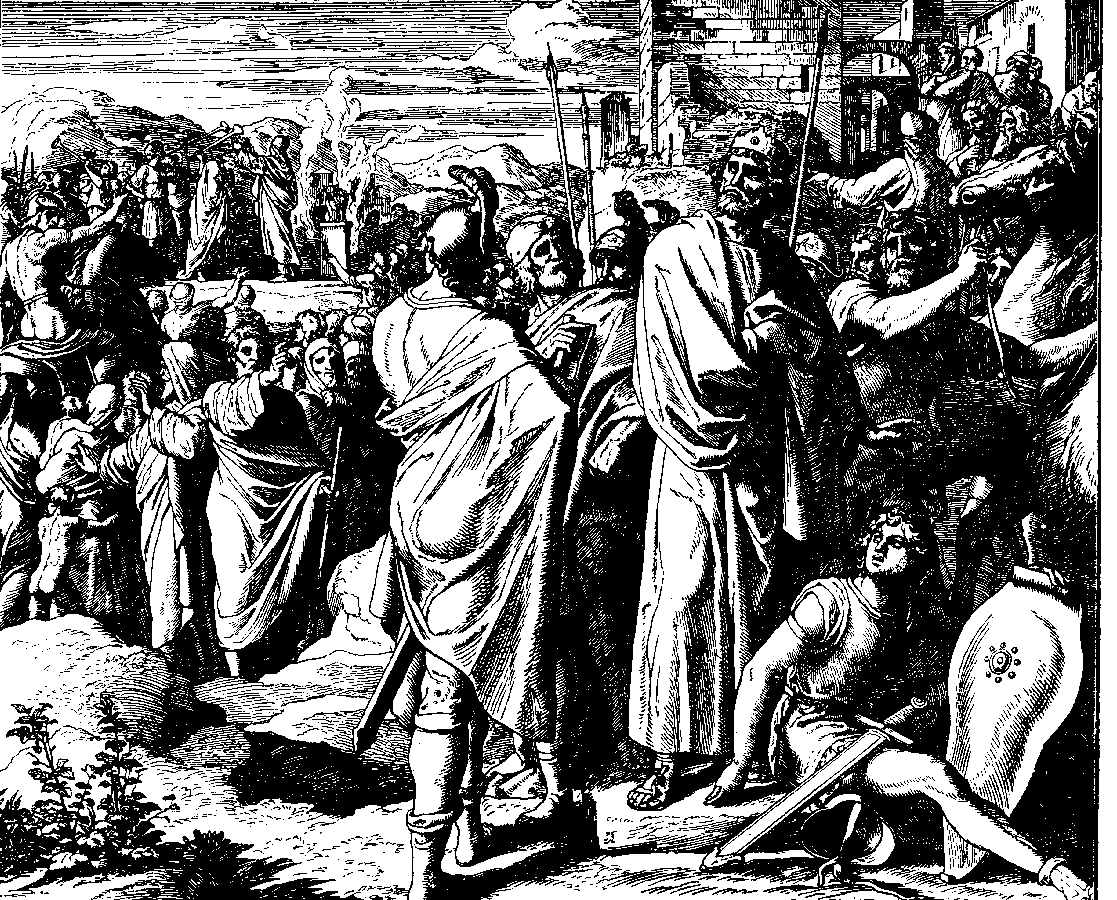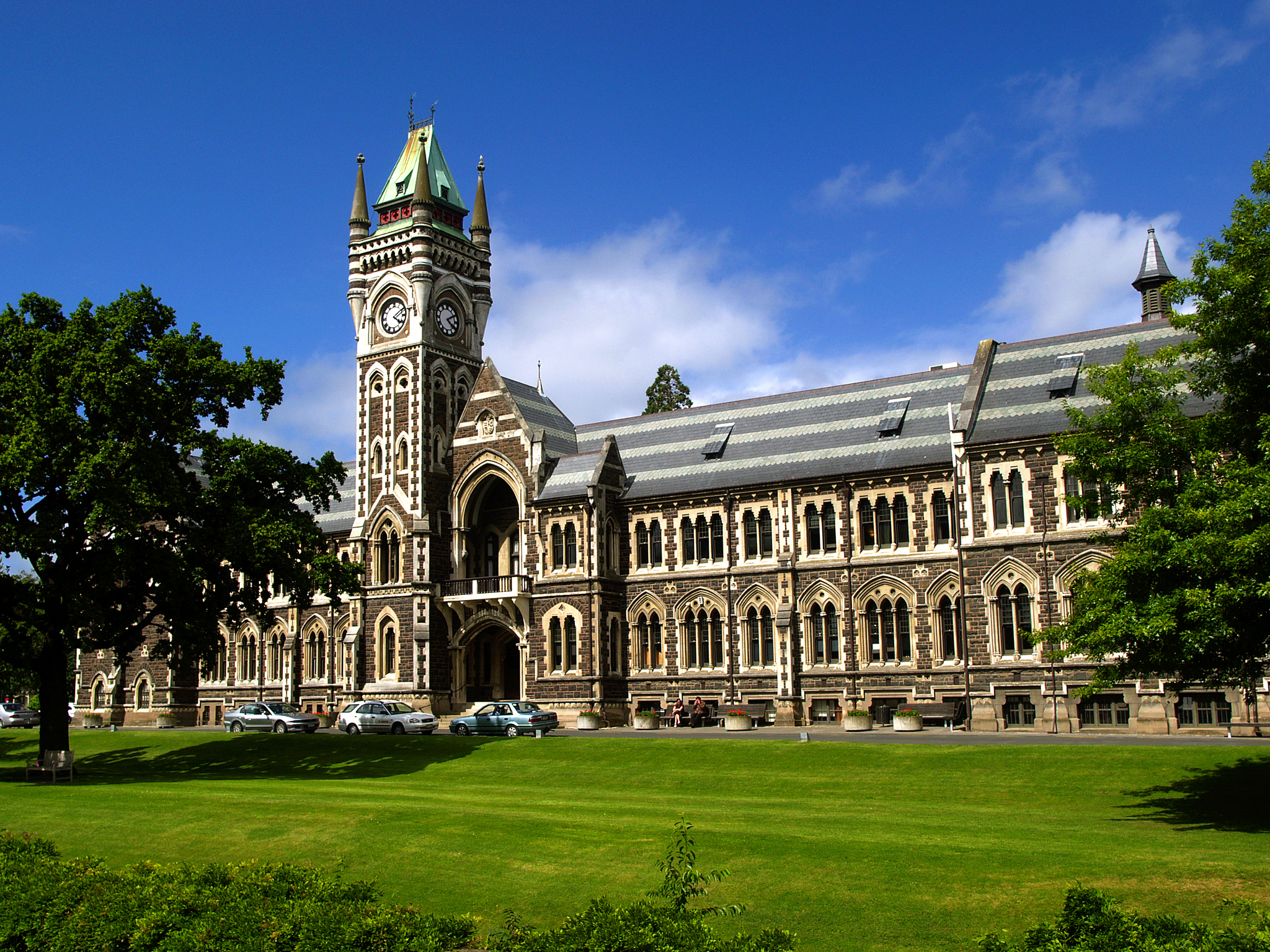|
St John's Cathedral, Parramatta
St John's Cathedral is a heritage-listed, Anglican Church of Australia, Anglican cathedral in Parramatta, New South Wales, Parramatta, City of Parramatta, Sydney, New South Wales, Australia. St John's was given the status of provisional cathedral of the Anglican Diocese of Sydney in 1969, and designated a Regional Cathedral in 2011 for the Western Region. It was added to the New South Wales State Heritage Register on 5 March 2010. The current rector is Reverend Canon Bruce Morrison. History St John's Cathedral is located near Parramatta railway station and is the oldest church site in Australia in continuous use. In October 1788, soon after the first load of Convicts in Australia, convicts arrived at Sydney Cove, Governor Arthur Phillip took a trip up to find the head of the Sydney Harbour (Port Jackson). Finding inhabitable land there he formed a settlement at Rose Hill (named after Sir George Rose the Under-Secretary of the Treasurer) and mapped out the bare bones of a town ... [...More Info...] [...Related Items...] OR: [Wikipedia] [Google] [Baidu] |
Parramatta
Parramatta (; ) is a suburb (Australia), suburb and major commercial centre in Greater Western Sydney. Parramatta is located approximately west of the Sydney central business district, Sydney CBD, on the banks of the Parramatta River. It is commonly regarded as the secondary central business district of metropolitan Greater Sydney, Sydney. Parramatta is the municipal seat of the Local government areas of New South Wales, local government area of the City of Parramatta and is often regarded as one of the primary centres of the Greater Sydney metropolitan region, along with the Sydney central business district, Sydney CBD, Penrith, New South Wales, Penrith, Campbelltown, New South Wales, Campbelltown, and Liverpool, New South Wales, Liverpool. Parramatta also has a long history as a second administrative centre in the Sydney metropolitan region, playing host to a number of government departments, as well as state and federal courts. It is often colloquially referred to as "Parra" ... [...More Info...] [...Related Items...] OR: [Wikipedia] [Google] [Baidu] |
Parramatta Railway Station
Parramatta railway station is a heritage-listed railway station located on the Main Western railway line, Main Western line, serving Parramatta in New South Wales, Australia. It is served by Sydney Trains' North Shore & Western Line, T1 Western Line, Leppington & Inner West Line, T2 Leppington & Inner West and Cumberland Line, T5 Cumberland Line services and NSW TrainLink Blue Mountains Line, Central West Express and Outback Xplorer services. History Parramatta station is one of Sydney's oldest. Sydney's first line connected Sydney and Parramatta Junction near Granville railway station, Granville and opened on 26 September 1855. It was extended to the current Parramatta station on 4 July 1860. Prior to the Main Western railway line, Main Western line being quadrupled from Granville railway station, Granville to Westmead railway station, Westmead in 1985, the station consisted of four platforms, platforms 3 and 4 on the main line and 1 and 2 on a loop. In 1985, the station wa ... [...More Info...] [...Related Items...] OR: [Wikipedia] [Google] [Baidu] |
2 Chronicles
The Book of Chronicles ( , "words of the days") is a book in the Hebrew Bible, found as two books (1–2 Chronicles) in the Christian Old Testament. Chronicles is the final book of the Hebrew Bible, concluding the third section of the Jewish Tanakh, the Ketuvim ("Writings"). It contains a genealogy starting with Adam and a history of ancient Judah and Israel up to the Edict of Cyrus in 539 BC. The book was translated into Greek and divided into two books in the Septuagint in the mid-3rd century BC. In Christian contexts Chronicles is referred to in the plural as the Books of Chronicles, after the Latin name given to the text by Jerome, but is also referred to by its Greek name as the Books of Paralipomenon. In Christian Bibles, they usually follow the two Books of Kings and precede Ezra–Nehemiah, the last history-oriented book of the Protestant Old Testament. Summary The Chronicles narrative begins with Adam, Seth and Enosh, and the story is then carried forward, almost e ... [...More Info...] [...Related Items...] OR: [Wikipedia] [Google] [Baidu] |
Philip Gidley King
Captain Philip Gidley King (23 April 1758 – 3 September 1808) was a Royal Navy officer and colonial administrator who served as the governor of New South Wales from 1800 to 1806. When the First Fleet arrived in January 1788, King was detailed to colonise Norfolk Island for defence and foraging purposes. As Governor of New South Wales, he helped develop livestock farming, whaling and mining, built many schools and launched the colony's first newspaper. But conflicts with the military wore down his spirit, and they were able to force his resignation. King Street in the Sydney CBD is named in his honour. Early years and establishment of Norfolk Island settlement Philip Gidley King was born at Launceston, England on 23 April 1758, the son of draper Philip King, and grandson of Exeter attorney-at-law John Gidley. He joined the Royal Navy at the age of 12 as captain's servant, and was commissioned as a lieutenant in 1778. King served under Arthur Phillip who chose him as se ... [...More Info...] [...Related Items...] OR: [Wikipedia] [Google] [Baidu] |
David Collins (lieutenant Governor)
Colonel David Collins (3 March 1756 – 24 March 1810) was a British Marine officer who was appointed as the first Judge-Advocate to the British colony of New South Wales. He sailed with Governor Arthur Phillip on the First Fleet and assisted in the founding of what is now known as the city of Sydney. He became secretary to the Governor and was later tasked with establishing a secondary colony in Port Phillip. Collins deemed the site unsatisfactory and transferred this settlement to Van Diemen's Land (later known as Tasmania), where he was appointed Lieutenant Governor and founded the city of Hobart. Early life and military career David Collins was born 3 March 1756 in London, the third and oldest surviving child of Arthur Tooker Collins (1718–1793), an officer of marines (later major-general) and Henrietta Caroline (died 1807) of King's County, Ireland. His grandfather Arthur Collins (1684–1760) was author of '' Collins's Peerage of England''. The family lived in Saff ... [...More Info...] [...Related Items...] OR: [Wikipedia] [Google] [Baidu] |
Mitchell Library
The Mitchell Library is a large public library located in the Charing Cross area of Glasgow, Scotland. It is the largest public reference library in Europe, and the centre of Glasgow's public library system. History The library was initially established in Ingram Street in 1877 following a bequest from Stephen Mitchell, a wealthy tobacco producer, whose company, Stephen Mitchell & Son, would become one of the constituent members of the Imperial Tobacco Company. Part of the original collection came from a purchase in 1874 by Glasgow Corporation of 1800 early books gifted to the University of Glasgow from the Glasgow philanthropist William Euing. New buildings were erected in North Street. A foundation stone was laid by Andrew Carnegie in September 1907. The completed building was opened by Lord Rosebery on 16 October 1911. The library contains a large public library, with over a million items. While composed mainly of reference material it also has a substantial lendin ... [...More Info...] [...Related Items...] OR: [Wikipedia] [Google] [Baidu] |
The Strand Magazine
''The Strand Magazine'' was a monthly British magazine founded by George Newnes, composed of short fiction and general interest articles. It was published in the United Kingdom from January 1891 to March 1950, running to 711 issues, though the first issue was on sale well before Christmas 1890. Its immediate popularity is evidenced by an initial sale of nearly 300,000. Sales increased in the early months, before settling down to a circulation of almost 500,000 copies a month, which lasted well into the 1930s. It was edited by Herbert Greenhough Smith from 1891 to 1930. The popularity of Sherlock Holmes became widespread after first appearing in the magazine in 1891. The magazine's original offices were on Burleigh Street off The Strand, London. It was revived in 1998 as a quarterly magazine. Publication history ''The Strand Magazine'' was founded by George Newnes in 1890, and its first edition was dated January 1891. The magazine's original offices were located on Burleigh ... [...More Info...] [...Related Items...] OR: [Wikipedia] [Google] [Baidu] |
National Library Of Australia
The National Library of Australia (NLA), formerly the Commonwealth National Library and Commonwealth Parliament Library, is the largest reference library in Australia, responsible under the terms of the ''National Library Act 1960'' for "maintaining and developing a national collection of library material, including a comprehensive collection of library material relating to Australia and the Australians, Australian people", thus functioning as a national library. It is located in Parkes, Australian Capital Territory, Parkes, Canberra, Australian Capital Territory, ACT. Created in 1960 by the ''National Library Act'', by the end of June 2019 its collection contained 7,717,579 items, with its manuscript material occupying of shelf space. The NLA also hosts and manages the Trove cultural heritage discovery service, which includes access to the Australian Web Archive and National edeposit (NED), a large collection of digitisation, digitised newspapers, official documents, manuscrip ... [...More Info...] [...Related Items...] OR: [Wikipedia] [Google] [Baidu] |
Otago University
The University of Otago () is a public research collegiate university based in Dunedin, Otago, New Zealand. Founded in 1869, Otago is New Zealand's oldest university and one of the oldest universities in Oceania. The university was created by a committee led by Thomas Burns, and officially established by an ordinance of the Otago Provincial Council in 1869. Between 1874 and 1961 the University of Otago was a part of the federal University of New Zealand, and issued degrees in its name. Otago is known for its vibrant student life, particularly its flatting, which is often in old houses. Otago students have a long-standing tradition of naming their flats. The nickname for Otago students, "Scarfie," comes from the habit of wearing a scarf during the cold southern winters. The nickname "Scarfie" has morphed into the nickname "Breather" in recent years. The university's graduation song, ''Gaudeamus igitur, iuvenes dum sumus'' ("Let us rejoice, while we are young"), acknowledges s ... [...More Info...] [...Related Items...] OR: [Wikipedia] [Google] [Baidu] |
Richard Johnson (chaplain)
Richard Johnson ( – 13 March 1827) was the first Christian cleric in Australia. Early life Johnson was born , in Welton, East Riding of Yorkshire, to John and Mary Johnson. He was educated at Hull Grammar School under Joseph Milner. In 1780 he entered Magdalene College, Cambridge as a sizar and graduated in 1784. His first post was as curate of Boldre, where William Gilpin was vicar. After about a year in Boldre, Johnson moved to London to work as assistant to Henry Foster, an itinerant evangelical preacher. Life in New South Wales Johnson was appointed chaplain of the prison colony at New South Wales in 1786. This appointment was due, in large part, to the influence of the Eclectic Society and two notable men, John Newton and William Wilberforce, who were keen for a committed evangelical Christian to take the role of chaplain in the colony. Johnson and his wife Mary sailed with the First Fleet and arrived in Australia in 1788. In addition to guiding the spiritual l ... [...More Info...] [...Related Items...] OR: [Wikipedia] [Google] [Baidu] |
Sir George Rose
Sir George Rose (1782–1873) was an English barrister and law reporter, a master in chancery. Life Rose, eldest son of James Rose, barge-owner, of Tooley Street, Southwark, was born in London on 1 May 1782. He received a presentation to Westminster School, and became king's scholar in 1797. He was admitted to Trinity College, Cambridge, but did not take a degree. According to the '' DNB'', he was elected to Peterhouse, Cambridge in 1801, but poverty prevented him from completing his education there, and it was not until 1835 that he took his M.A. degree as a member of Trinity College, Oxford. On 5 May 1809 he was called to the bar at the Inner Temple, and commenced attendance in the common-law courts and on the northern circuit. Rose was a witty man, and his first success is attributed to the publicity he attained by the composition while in court, when Lord Eldon was the presiding judge, of the following verse: :Mr. Leach made a speech, :Angry, neat, and long; :Mr. Hart, on the o ... [...More Info...] [...Related Items...] OR: [Wikipedia] [Google] [Baidu] |
Port Jackson
Port Jackson, commonly known as Sydney Harbour, is a natural harbour on the east coast of Australia, around which Sydney was built. It consists of the waters of Sydney Harbour, Middle Harbour, North Harbour and the Lane Cove and Parramatta Rivers. The harbour is an inlet of the Tasman Sea (part of the South Pacific Ocean). It is the location of significant landmarks such as the Sydney Opera House and Sydney Harbour Bridge. The location of the first European settlement and colony on the Australian mainland, Port Jackson has continued to play a key role in the history and development of Sydney. Port Jackson, in the early days of the colony, was also used as a shorthand for Sydney and its environs. Thus, many botanists, see, e.g., Robert Brown's '' Prodromus Florae Novae Hollandiae et Insulae Van Diemen'', described their specimens as having been collected at Port Jackson. Many recreational events are based on or around the harbour itself, particularly Sydney New Year's ... [...More Info...] [...Related Items...] OR: [Wikipedia] [Google] [Baidu] |






